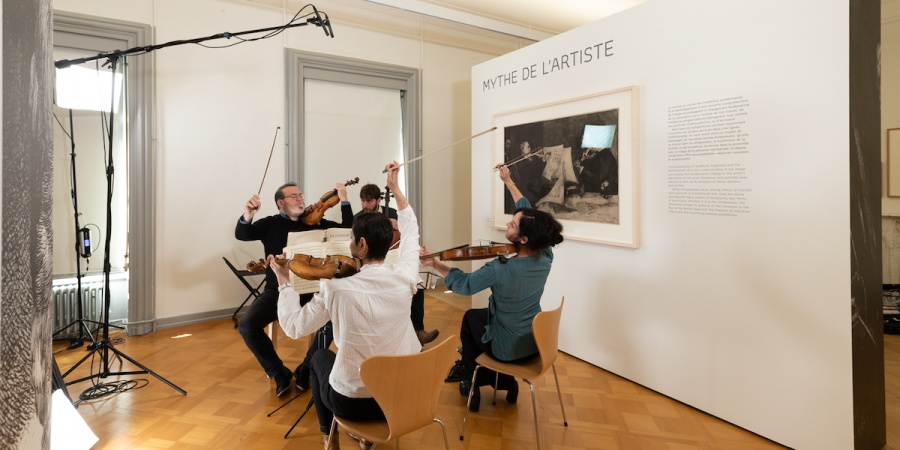SCHUBERT String Quartets No 15. Quartettsatz
Gramophone, november 2015
Author: Harriet Smith
AMY044. SCHUBERT String Quartets No 15. QuartettsatzSCHUBERT String Quartets No 15. Quartettsatz
SCHUBERT String Quartets No 15. Quartettsatz
If you haven’t previously encountered Quatuor Terpsycordes, they’re a Geneva-based period-instrument group who formed in 1997; this is their second Schubert disc.
The Quartettsatz is a work that lends itself particularly well to the period approach, and the Terpsycordes are duly impressive, stripping away any excess vibrato. Particularly impressive is the organic way in which the music unfolds: the turn from tremolo-laden minor to the lilting theme in A flat major possesses the utmost simplicity (some are more overtly sweet here but I like their approach), while the sudden fz interjections are forthright but never outsized. The only caveat is a moment – but it is just a moment – of sour tuning at 5'54". That aside, this new version sits convincingly alongside the Belcea and Takács in terms of formidable modern-day recordings.
Everyone will have their own notion of the greatest performances of the G major Quartet, though period-instrument versions are still relatively thin on the ground. Essential to the vast span of the opening movement is the clear establishment of a regular pulse and, while the Terpsycordes are not unduly wayward, when the first violin introduces the pp theme it’s a touch slower than previously. And compared to the Artemis, they sound perhaps too relaxed. There’s plenty to admire though – not least an airiness of texture and some wonderfully characterful viola-playing.
I did wonder whether in the Andante un poco mosso they could have risked more: the Belcea and Artemis both set up a sense of desolation in the dragging tread – less a matter of speed than of articulation – in which the fortissimo interjections, well honed in terms of ensemble, lack the hysterical edge, the glimpsing of the abyss, suggested in the finest performances. And while they show great finesse in the Scherzo (the Artemis going hell for leather, the Belcea finding more vulnerability), again this new version doesn’t build to a comparable intensity.
The Terpsycordes convey well the Janus-like finale, with its vacillation between major and minor, and there are many instances of wonderfully intimate interplay (eg tr 5 from 2'57", which has a delicious spontaneity, complete with fabulously judged portamentos, or from 7'18", where the music builds from utter quiet to muscular yet elastic arpeggios). Again, there are more extreme readings out there, the Artemis in particular fearless in this regard, but this new version certainly has plenty to say, even if it doesn’t surpass the very finest quartets around.
article online: http://www.gramophone.co.uk/review/schubert-string-quartets-no-15-quart…

